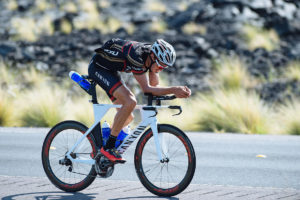By Joe
Fall and winter is the time to build a base level of strength and fitness for the upcoming race season. Any time we perform highly repetitive movements with high frequency, we are bound to have some muscle asymmetries and joint restrictions that may fester into nagging injuries if not accounted for in the offseason. Here are four exercises to try this offseason to supplement your training this winter and fall.
Cat Camel
If you want to hear a spirited debate form, ask a fitness professional which part of the movement is a cat and which is the camel. You might be surprised how passionate people can argue about something so inconsequential as verbiage of the same movement. Either way, the Cat Camel (Camel/Cat?) is a beneficial exercise that focuses on flexing and extending the thoracic spine (mid-back). The thoracic spine naturally should sit in a “kyphotic” or flexed position. When spending hours on the bike or indoor trainer, the thoracic spine sits in the flexed position, so let’s take some time to focus on maintaining thoracic extension too.

To perform, position yourself on the floors with arms extended under your shoulders and knees bent under the hips (also known as a quadruped position). From here, imagine a string is tied to your thoracic spine. As the “string” is being pulled, the thoracic spine is arched as the head and neck also flex down towards the floor. Then, while keeping the arms extended, imagine someone is trying to push your thoracic spine into the floor, with head and neck looking up to the ceiling.
Thread the Needle
We are focusing on the thoracic spine again but this time the culprit is due to a dominant lead arm during swimming. The thread the needle exercise is designed to improve thoracic spine rotation. To perform, again position yourself in a quadruped position similar to the Cat Camel exercise. Then, taking your right arm, reach as far as you can in the space between your left arm and left knee. Hold for five to ten seconds then repeat on the other side. This exercise can be aided by the use of putting the moving hand palm up on a foam roller, but it is not necessary.
Single Leg Squats
Muscle asymmetries are emphasized in open chain, single leg exercises. One of my favorite exercises to isolate the legs are single leg squats. This is more of technical exercise than the previous listed, so I recommend starting using a furniture slider or paper plate on one foot, like the video shown below:
Planks
Albert Einstein is credited with first identifying time as being relative. He must have been performing planks when he had his eureka moment because time seems to stand still while this exercise is being performed. There are countless variations to choose from but this exercise shouldn’t be overlooked in its importance on maintaining a neutral spine while performing any of the triathlon disciplines. The focus should be time under muscle tension so break up the set and reps scheme and while keeping proper spinal alignment (4×30” with good form will have better results than 2×1’ with poor form).
Give those a try this offseason! Happy training!